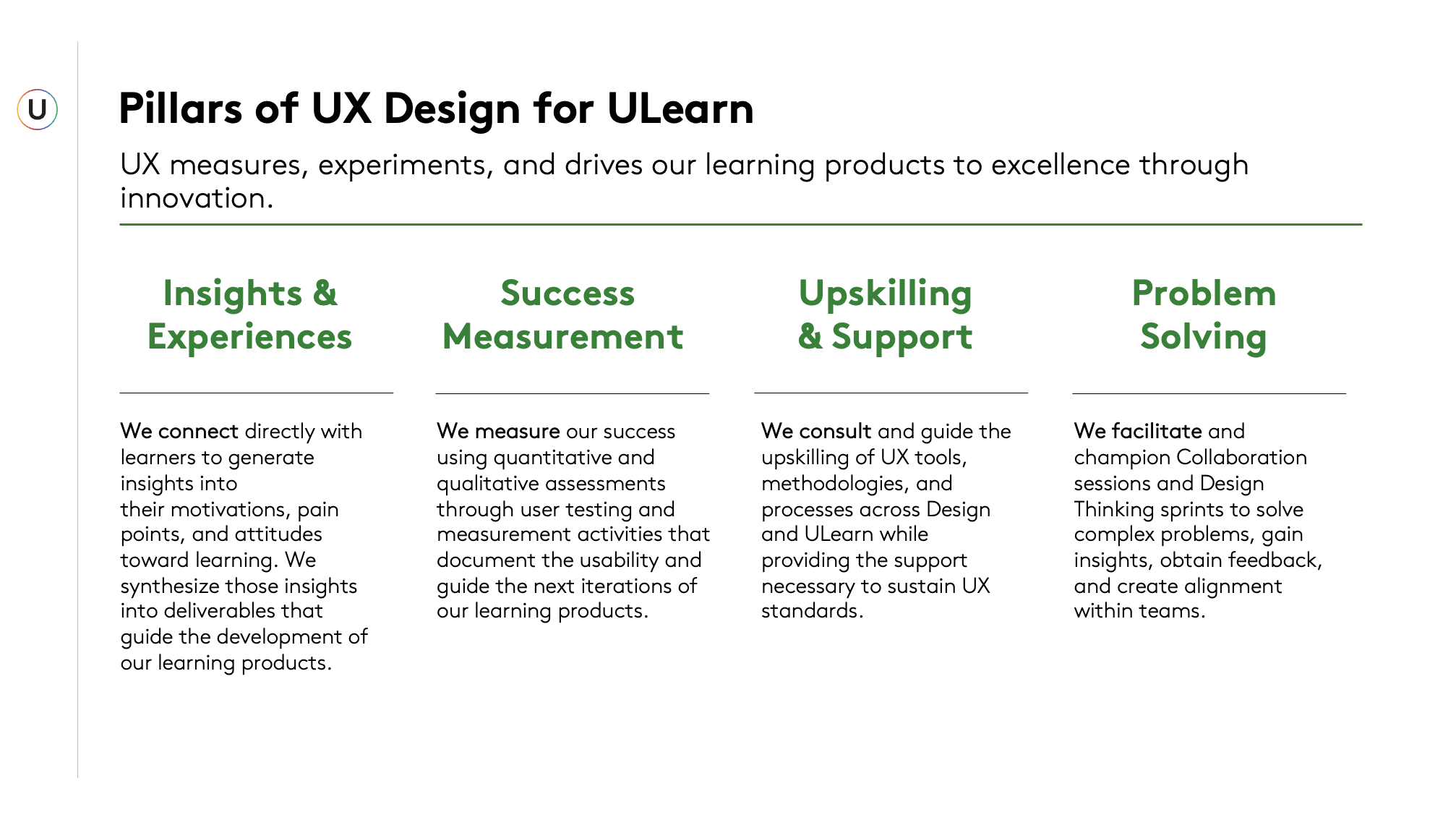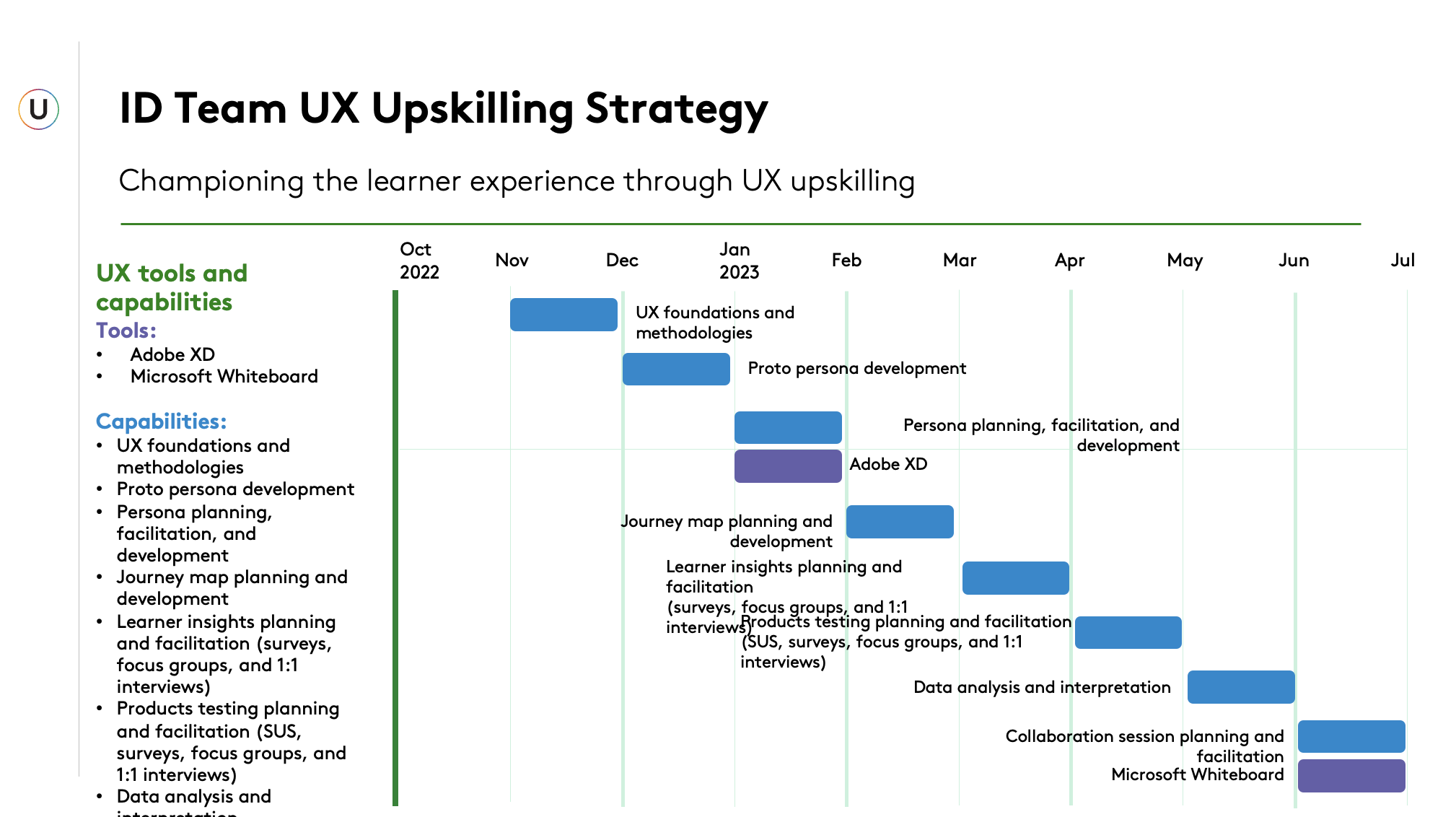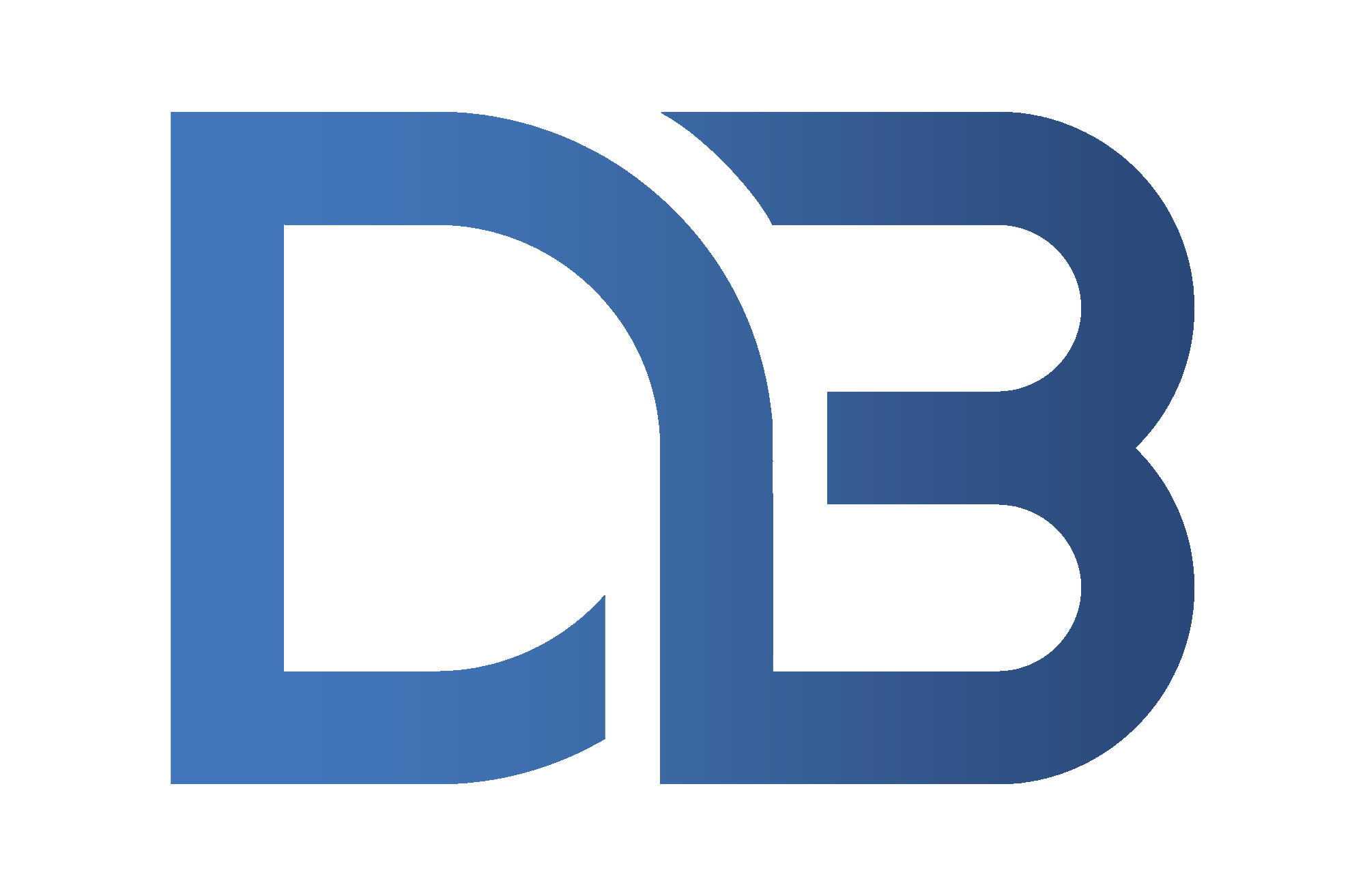
Context
In 2021, Comcast rebranded its internal employee learning org from Comcast University to ULearn, aiming to modernize the experience for a new generation of employees—especially Millennials moving into leadership. The business adopted modern tools like Workday for LMS and Articulate for content creation, replacing older SAP-based systems.
To support this digital shift, Comcast hired its first UX team into the ULearn division. But the team was entirely junior, and UX had never existed in this space before; stakeholders didn’t understand UX, didn't know how it impacted learning, and couldn't connect it to their own performance metrics. The result: confusion, misalignment, and underutilization.
I was hired to bring structure, strategy, and impact to UX across ULearn.
Role & Team
The team:
- Included newly hired designers with ~1–2 years of experience, eager but unsure how to advocate for their craft
- Operated alongside Learning Experience Designers (LXD), which created role confusion
- Had no senior UX leadership to model best practices or drive visibility
My responsibilities included:
- Mentoring and coaching junior designers
- Building UX processes, outputs, and standards
- Transitioning the org from Adobe XD to Figma
- Establishing measurement frameworks and agile workflows
- Translating UX value into business-aligned terms


Planning involved setting the timelines and defining our service pillars, giving the design org a path to greater adoption.
Process
At Comcast, change starts with a data point in a PowerPoint. So that’s where I began.
This number included required compliance training and pointed to a deeper experience problem—one that UX was well-positioned to explore and solve. I made the case that:
- Completion ≠ Comprehension: Finishing training doesn't mean learning happened
- UX could uncover why employees dropped off and what they needed
- Personas and journey maps could better align content with learner goals
- Usability measurement (SUS) could improve platform and content design
- UX iteration could reduce delivery drag and increase efficiency over time
I also introduced a tiered UX service model to adapt to varying business needs:
- Tier 1: Embedded UX strategy for flagship initiatives
- Tier 2: Short-term consulting and feedback
- Tier 3: Rapid IA or visual design support
Finally, I led the transition from Adobe XD to Figma, recognizing that XD had stagnated and lacked enterprise-level maturity. Comcast had an existing Adobe license, so this required internal lobbying and cross-org collaboration with other Comcast and NBCUniversal teams to get Figma licensed, onboarded, and adopted across the UX team.
Challenges
- Low UX maturity: UX was misunderstood or ignored across many teams
- Inexperienced team: Junior designers were hesitant to lead or push back
- Legacy culture: Agile design methods clashed with waterfall planning
- LXD ≠ UX: The difference between learning design and user experience design created confusion...but also opportunity
And I had one other (big) advantage:
Despite the challenges, my managers were open-minded, enthusiastic learners who deeply believed in the mission. They asked questions, sought understanding, and backed me completely. Their curiosity and trust were foundational to the CoE’s success—and a huge reason why I loved this job.
Results & Impact
- UX gained visibility and credibility as a strategic function
- Adobe XD to Figma migration completed, with company-wide onboarding
- SUS introduced as the first-ever usability metric in ULearn
- Tiered UX service model improved alignment with project needs and reduced UX design's timeline impact
- UX drag (measured via story points) reduced by ~33%
- Kanban planning introduced, improving delivery timelines and favoring radical transparency
- UX maturity increased, with stronger cross-functional understanding and more proactive solutions vs. reactive order-taking
Reflection
This was one of the most fulfilling projects of my career—not because it was easy, but because each day felt like the art of the possible. I helped elevate a junior team, translate UX value to a skeptical organization, and build the kind of design culture I wish every team had.
It also reinforced a core belief: operations is where design turns into impact. I wasn’t designing screens and pushing pixels, which was formerly my modus operandi; I was designing systems and processes, and building team confidence. This experience is a big part of why I continue to focus on Design Operations: to help teams not only do good work, but to also be set up to thrive while doing it.


